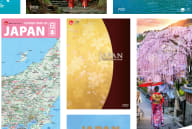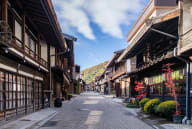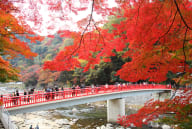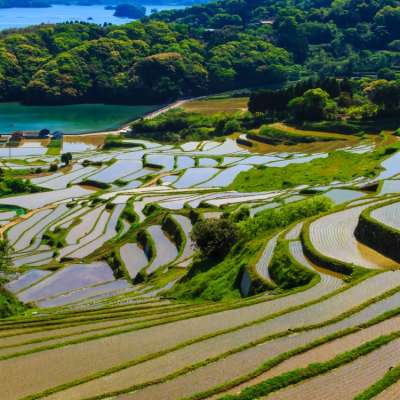
Saga Fresh from nature, crafted with care, savoured with delight
A Culinary Journey in Saga
Saga Prefecture, situated in the northern part of the Kyushu region, is renowned for its serene landscapes, historical sites, and rich agricultural traditions. Blessed with fertile plains and a temperate climate, Saga produces a variety of premium agricultural products that are celebrated both locally and internationally.
Saga is renowned for its exceptional agricultural produce, forestry products, and seafood. The fertile plains and temperate climate yield a variety of high-quality crops, including premium green tea, and the renowned Saga beef, which is prized for its marbled texture and rich flavour. The coastal waters provide an abundant supply of seafood, such as Ariake seaweed and Takezaki crab, which are integral to the local cuisine. Saga's culinary scene is also highlighted by local specialties like Yobuko squid, known for its delicate taste and freshness, and Saga-style pressed sushi, which showcases the prefecture's dedication to using fresh, local ingredients.
Saga is also known for its pottery, such as Arita and Imari ware, which adds an artistic touch to the dining experience. While you delve into the ancient wonders of Yoshinogari Historical Park or admire the majestic Karatsu Castle, Saga's lively food culture will ensure you're both delighted, and well-nourished.
Experience Saga's distinctive flavours and traditional craftsmanship that have been perfected over generations, crafted from the abundant resources of its lush mountains and coast.
Ika-no-ikizukuri (Sashimi prepared from live squid)

What it is (Ingredients)
Ika-no-ikizukuri, a delicacy originating from Yobuko-cho town in Saga, involves serving sashimi sliced from a live squid. The dish highlights the freshness, tenderness, and transparency of the squid, often accompanied by soy sauce and wasabi. Its preparation ensures the squid remains alive until just before serving, preserving its natural flavours and texture. It showcases the craftsmanship of the chef who skillfully brings out the deliciousness of delicate squid whose texture and flavour change depending on how you handle it. It takes about only 30 seconds for them to fillet one squid.
History/Origin
The idea of preparing live squid began when a chef in Yobuko went fishing and was so moved by the deliciousness of freshly caught. Inspired by this experience, he opened Japan's first restaurant with a fish tank to offer that experience to the customers. The squid is caught by local fishermen, kept alive in the restaurant, and prepared and served by skilled chefs. This tradition remains a source of pride in Yobuko, attracting people from all over the country to enjoy this delicacy during squid season.
Where You Can Eat
You can experience Ika-no-ikizukuri in traditional Izakaya (Japanese-style dining bars) and seafood restaurants throughout Saga Prefecture.
When to Eat
In Yobuko, squid is a year-round delicacy, with different types available depending on the season. From April to December, you can savour Yari-ika (spear squid,) a transparent squid known for its crunchy texture. From December to March, Aori-ika (bigfin reef squid) takes the spotlight, while Ko-ika (cuttlefish) delights from March to April.
Ika-no-ikizukuri promises a sensory journey that celebrates Saga’s rich maritime heritage and culinary excellence.
Saga Beef

What it is (Ingredients)
Saga beef, renowned for its exceptional marbling and tenderness, features cuts from Wagyu cattle raised exclusively in Saga. The rich, buttery flavour and melt-in-your-mouth texture results in a luxurious dining experience, whether it is served as steaks, sukiyaki, or shabu-shabu. Saga beef is commonly served with locally sourced vegetables and soy-based dipping sauces.
History/Origin
The history of Saga beef is relatively recent – having first gained notoriety in 1984, when it was sold at the Kansai meat market. In the early Meiji period (1868 - 1912) Saga primarily focused on raising dairy cows, however following the trends of the times, they started raising beef cattle, perfecting their techniques throughout the decades. The meticulous breeding process, combined with Saga's mild climate and pristine water sources, nurtures the distinct flavour and marbling characteristic of Saga beef. The stringent regulations and care in rearing ensure each cut meets the highest standards of quality, maintaining Saga beef's reputation as one of Japan's finest meats.
Where You Can Eat
While Saga beef is well known across Japan, Saga Prefecture offers numerous dining establishments and specialty shops where you can savour this premium meat. From upscale restaurants to homier, local Yakiniku (Japanese BBQ) restaurants, experiencing Saga beef is a culinary journey through the prefecture's rich gastronomic heritage.
When to Eat
The best time to indulge in Saga beef is during autumn and winter when the marbling is at its peak, enhancing the meat's flavour and tenderness. Celebrating a special occasion or seeking a taste of Saga's culinary legacy, Saga beef promises a memorable dining experience that reflects Saga's dedication to exceptional quality and taste.
Discover the allure of Saga beef, where each bite tells a story of tradition, craftsmanship, and unparalleled flavour.































































